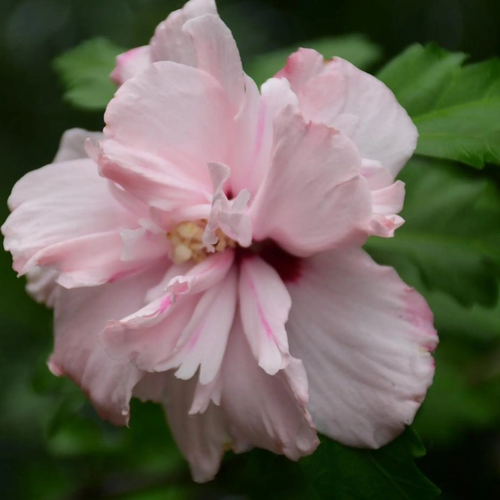
Rose of Sharon
Uses:
- Specimen Plant or Focal Point
- Borders & Hedges
- Container Gardens
Features:
- Big Beautiful Flowers
- Low Maintenance
- Attracts Pollinators
Sunlight:
- Full Sun
- 6+ Hours of Direct Sun
Growing Zones:
- 5-9
- What is My Zone?
Rose of sharon shrubs have large tropical flowers that last from summer to late fall. The best part is they are winter hardy in colder growing zones up to zone 5. Plant these to add large bright flowers to your garden in full sun locations. The low maintenance plants have an added bonus of attracting pollinators like bees, butterflies & hummingbirds!
Why Buy Rose of Sharon Online
Rose of Sharon are hibiscus shrubs that are winter hardy down to -20 degrees (zones 5 to 9). Gardeners love the plants for their beautiful, distinct tropical blooms. The flowers can be as large as a dinner plate and mature into long seed pods. These bushes grow from 3 to 12 feet tall depending on the variety.
Winter hardy hibiscus shrubs
Large colorful tropical flowers
Growing zones 5 to 9
Use as centerpieces in the garden
Easy to care for once established
About Rose of Sharon

Hibiscus syriacus, Shrub Althea
China, India
Bushes
Deciduous
5 - 9
White, Pink, Purple, Red, Blue, Bi-color
Summer, Early Fall
Upright, Multi-stemmed
Bees, Butterflies, Hummingbirds
Heat, Humidity, Drought (once established), Urban Pollution
Deer
How To Use Rose of Sharon In The Garden
Rose of Sharon, or Hibiscus syriacus, is a deciduous shrub known for its large, trumpet-shaped flowers in white, red, pink, lavender, blue, or bicolors. Some forms remain compact, making them easy to fit into smaller landscapes, while others reach upward of 8 to 10 feet tall and serve as striking focal points. These woody-stemmed shrubs are surprisingly undemanding, adapting well to average soil conditions cold regions where true tropical hibiscus wouldn’t survive. They also provide nectar for pollinators, creating a hub of warm-season garden activity.
In the landscape, Rose of Sharon can create an informal hedge, a backdrop for a mixed border, or a standalone decorative specimen. Mass plantings can form a living privacy screen during the growing season and can be periodically trimmed to suit more formal layouts. Dwarf varieties shine in container plantings or neatly edged garden beds, and taller columnar selections are excellent for vertical interest. Many gardeners plant Rose of Sharon alongside lower-growing perennials to hide the shrub’s bare lower stems.
Rose of Sharon Care
Plant Rose of Sharon in spring or fall in moist, well-draining soil. Provide full sunlight for optimal flowering. Water regularly, especially during hot weather, aiming for deep weekly watering to promote a robust root system. Annually, feed in early spring as leaves emerge, and consider a mid-summer application with a low-nitrogen fertilizer.
Prune in late winter or early spring before new growth to maintain size and shape; this encourages branching and increases blooms. For winter care, cease fertilizing by July to prevent new growth, allowing the plant to store energy. In colder climates, mulch around the base to insulate roots. When growing in containers, select a large pot with drainage holes and use quality potting mix. Repot annually with fresh soil to replenish nutrients.
Learn More About Rose of Sharon Care

Rose of Sharon Companion Plants
Rose of sharon shrubs do not bloom until late summer typically. So it is best to plant other shrubs, perennials and annuals next to rose of sharon that bloom earlier in the year. Some of our favorite plants to grow with rose of sharon are viburnum, bluebeard, phlox and verbena. Or plant an evergreen nearby, like boxwood or arborvitae to provide a great backdrop of color to the tropical flowers.








































